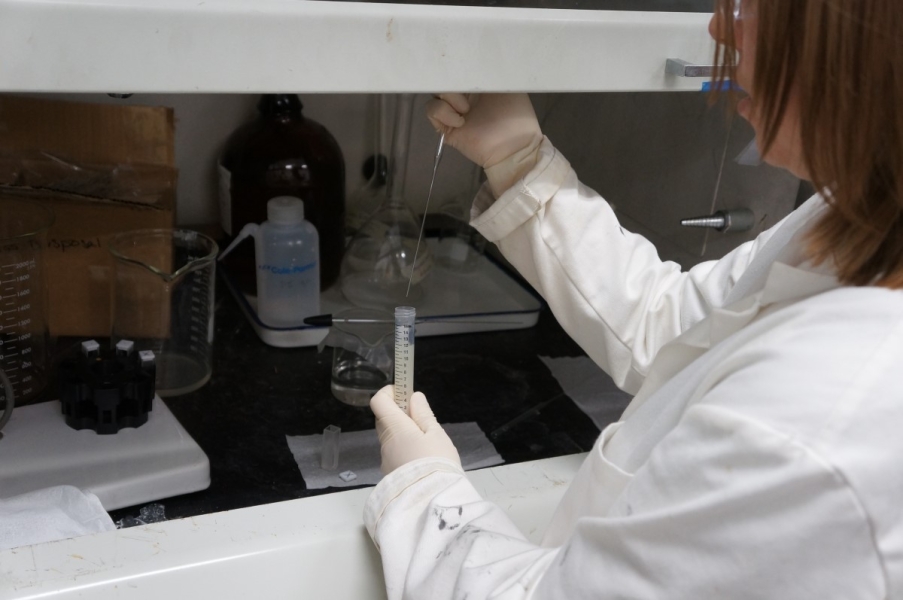Lower Trophic Level Monitoring on Lake Erie
-
1/14
From 2008-2018, the GLC was part of a long-term monitoring project on Lake Erie. Several state and federal agencies in the US and Canada sample at sites around the lake. The GLC collected data every two weeks at two stations near Buffalo, NY. Here are Mark Clapsadl and Kit Hastings sampling zooplankton and profile data.
Download Image -

2/14
A map of Lake Erie, showing the 20 sampling sites of the Lower Trophic Level Assessment. The two sites in the blue box are maintained by Great Lakes Center staff. (Image credit: Lake Erie Forage Task Group, 2009)
Download Image -
3/14
Kit Hastings using a data sonde to collect a vertical profile of the water column. Kit is the main researcher on this project.
Download Image -
-

-
6/14
Mark Clapsadl setting up bottles for chlorophyll samples. Visible are the water sampling tube, a ponar dredge sampler, and a water bucket for the integrated water sample that the chlorophyll and phytoplankton samples are taken from.
Download Image -
7/14
Mark Clapsadl pouring water into bottles for chlorophyll analysis. We use opaque brown bottles to reduce exposure to light that could alter the amount of chlorophyll.
Download Image -
-
-

10/14
To determine chlorophyll a concentration, Kit Hastings filters the water samples to extract the chlorophyll, then grinds sample filters in an acetone solution.
Download Image -

11/14
The chlorophyll samples are centrifuged to settle all of the filter fibers out.
Download Image -

-

-

14/14
Kit places extracted chlorophyll samples in the spectrophotometer to determine the chlorophyll a concentration in the water samples.
Download Image

